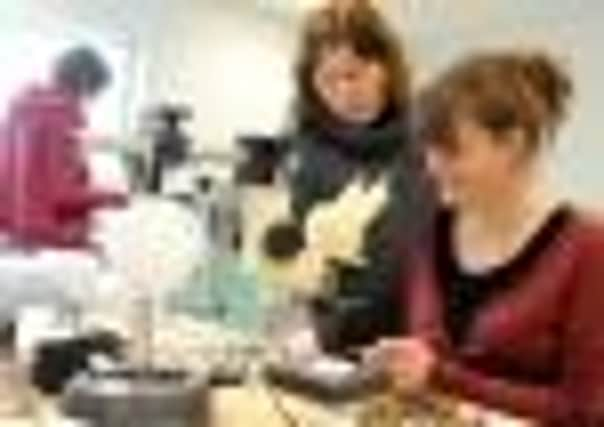Fishbourne Roman Palace remains full of wonders five decades on


Making sense of around 200,000 fascinating items of ancient pottery, bones and metalwork within its collection is a task clearly demanding a high degree of professional skill.
It’s something curator Dr Rob Symmons finds exceptionally challenging, yet rewarding in being surprised by new archaeological treasures consistently emerging from this remarkable site.
Advertisement
Hide AdAdvertisement
Hide AdThough we are uncertain of the palace’s original owner, many believe it could well have been built for British tribal chief Togidubnus, who would have been a powerful ally in the early phases of British conquest in the 1st century AD.


Many historians state the site’s development, with its opulent gardens, solid stone construction and lavishly decorated mosaic floors was a classic marker of imperial superiority.
While its fortunes eventually waned as the Romans withdrew from our shores, its legacy thankfully remains, having been skilfully excavated during the 1960s.
As Dr Symmons shows me round the extensive collections discovery centre at the centre of its conservation mission, it is clear there’s plenty of passion being put into its operation.
Advertisement
Hide AdAdvertisement
Hide Ad“The palace is unique. Its date and size make it special, as do the stories it tells about what is a significant period in our history. That’s what makes it so important.


“It was excavated by Barry Cunliffe who did a fine job, but things have moved on in terms of techniques after 50 years. It is great to have the archive we’ve got which we are now able to revisit,” explains Dr Symmons, who has previously worked at the Natural History Museum.
By his own admission, it takes something of an obsession with detail to successfully carry out such meticulous work.
Praising his ‘tenacious’ cataloguing colleagues for their efforts (which began several years ago and are not due for completion until the end of 2016), he explains that even a fleeting examination of its finds reveals plenty about what life really was like 2,000 years ago. The curator motions me towards several banks of painstakingly archived material.
Advertisement
Hide AdAdvertisement
Hide AdAmong the assortment lies the femur bone of a sheep, which tells a story in its own right. On inspection, we can see how the animal met its end at the hands of a Roman soldier, who used a very specific carving technique favoured by the military, demonstrating the army’s definite presence within the area.
Following this, I set eyes on what is probably among the most mysterious items – a small, slightly sinister metal figurine with a distinctive face. According to Dr Symmons, it is in fact one of only several examples of an early Roman voodoo doll.
“I got into archeology not for a love of exact dates, more because I wanted to find out about how people lived, that’s what interests me.
“We are privileged to work every day with around 3,000 crates containing our history. We do this because we love it – there are real rewards working in conservation, but they are not financial.”
Advertisement
Hide AdAdvertisement
Hide AdOverseeing the site’s 30 staff is the responsibility of director Jaane Rowehl, who has enjoyed an eventful first year in her post.
While there are clearly plenty of pressures in maintaining and enhancing facilities, she is anticipating an extremely busy summer period ahead.
“It has been fantastic for me here. The recession affecting tourism is a great challenge for us, so I’ve had to learn very fast how to manage the site in order to make the best use of resources.
“But it has been good fun with having TV’s Hairy Bikers down here so I got my first screen appearance. However, there have been less exciting times, with moments such as seeing our cafe operators going bankrupt and having to find a replacement for them.”
Advertisement
Hide AdAdvertisement
Hide Ad“Overall, this is a great job and I do feel very privileged. We have a really good team and are supported by around 40 volunteers, without whom we wouldn’t be able to do our work,” adds the director, who says operations, including the constant monitoring of the fine array of mosaics, requires considerable dedication from the whole team.
Sharing her enthusiasm, Antony Muzzall of the education department believes the site is continuing to play a vital role in expanding younger generations’ learning horizons.
He explains: “It’s just brilliant for the children to come here and see history brought to life.
“We have activities where they can dress up and even try on Roman armour. I came here myself as a boy and I was just hooked by the place.
“The feedback we get from schools is they think it’s outstanding, which is perhaps why we have won awards.”